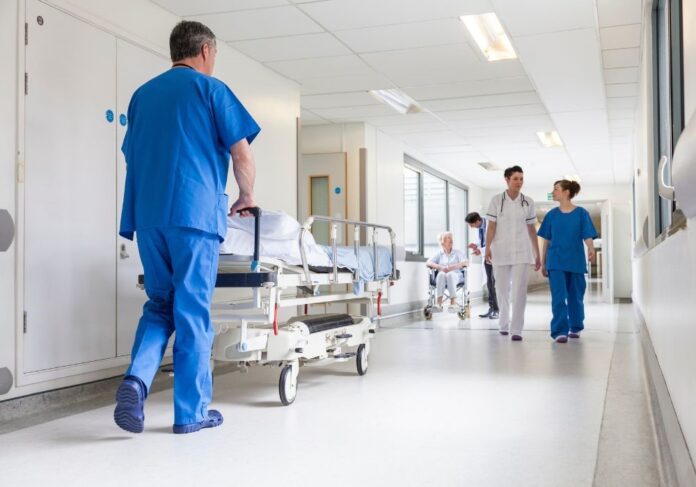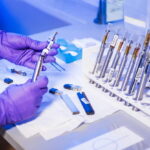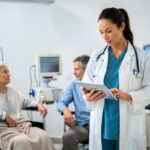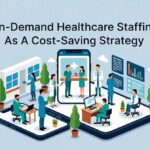In order to promote the well-being of workers in a hospital, safety must become a priority for your employees. Learn multiple ways to stay safe on the job.
Workplace safety is a top priority for many business owners. It’s important to ensure your employees are as safe as possible. Hospitals are where people come to be taken care of, and the employees of the institution should feel safe as well. In this post, I’ll show you how to promote worker safety in hospitals and other medical facilities.
Know Your Patient’s History
It’s important to know your patients and their mental health history. Ask about any episodes and past hospitalizations. Try not to make assumptions about patients based on their appearance or how they speak.
If you work with patients with a history of violence or self-harm, be aware of this and be proactive about the wellness of all involved. Promoting worker safety in hospitals is an essential task.
Avoid Working Alone When Possible
Working alone can put you at a higher risk, so do not close your shift alone if your job allows it and it’s safe to do so.As you leave, alert someone else of your actions, ask for an escort to your car if needed, and stay hyperaware of your surroundings.
The buddy system is a method people use to ensure safety. Buddies should be familiar with the area, assist in an emergency, and help with any closeout tasks at the end of a shift that could leave someone vulnerable, such as taking out the trash or loading a vehicle in a parking garage.
Hire Round the Clock Security Guards
If you can put a security guard on staff, they can help prevent crime and keep your employees safe. Most hospitals could benefit from a security guard booth. Security guards can also assist with theft prevention, crowd control, and traffic control.
Report Aggressive Patients and Visitors
One of the first steps to promoting safetyis prevention. You should report aggressive patients and visitors to security or the police immediately. You should not hesitate about doing this; it is your duty as an employee to report suspicious activity.
Additionally, each department should consider hosting active shooter training to prepare staff on how to survive in case of an incident. This training should be made available upon hire and revisited as often as needed for training and safety purposes.
Keep Workers Safe at Work
Safety is everyone’s responsibility. Hospitals do their best to prevent accidents and injuries by ensuring that all equipment is up-to-date or repaired when needed and following safety procedures when working with hazardous materials like chemicals or sharp objects. Additionally, a hospital is responsible for keeping its staff and patients safe daily from potential danger.
Read Also
- Creative Approaches to Alleviating Healthcare Staff ShortagesHospitals and clinics are facing staff shortages, which makes it harder to take care of patients well. Finding simple and useful solutions is very important. Easy changes like flexible work hours, good training, and chances to grow can help staff stay happy. Technology, like online doctor visits and helpful tools, can make work easier. Smart… Read more: Creative Approaches to Alleviating Healthcare Staff Shortages
- Understanding the Role of Sterilizers in Healthcare FacilitiesHave you ever wondered how hospitals keep their equipment safe enough to use on dozens of patients every day? Most people never think about what happens behind the scenes, yet these hidden steps play a huge role in patient safety. Sterilizers are part of that system, working quietly to remove harmful germs before any instrument… Read more: Understanding the Role of Sterilizers in Healthcare Facilities
- Building Healthcare Access Where It’s Needed Most: A Local First ApproachHealthcare shouldn’t depend on where you live. But in the U.S., it often does. If you’re in a big city, you likely have options. If you’re in a small town or an underserved neighbourhood, it’s a different story. To fix this, more healthcare leaders are turning to a local-first approach. That means putting clinics and… Read more: Building Healthcare Access Where It’s Needed Most: A Local First Approach
- Revolutionizing Patient Engagement: Innovative Solutions for Improved Care and Treatment SuccessNavigating healthcare system can often feel overwhelming for patients. Between appointments, prescriptions, and treatment regimens, it’s easy for crucial details to get lost in the shuffle. That’s why effective patient engagement and support solutions are more important than ever. Companies like Serva Health, with their pharma hub services, are stepping up to ensure that patients… Read more: Revolutionizing Patient Engagement: Innovative Solutions for Improved Care and Treatment Success
- On-Demand Healthcare Staffing As A Cost-Saving StrategyThis is an exciting and challenging time for the healthcare industry. Technology is advancing almost faster than humans can keep pace. New legislation is creating fresh challenges for the future of healthcare, and the shifting population demographic continues to place more pressure on healthcare facilities. Amidst these changes, healthcare facilities are facing a critical staffing… Read more: On-Demand Healthcare Staffing As A Cost-Saving Strategy






